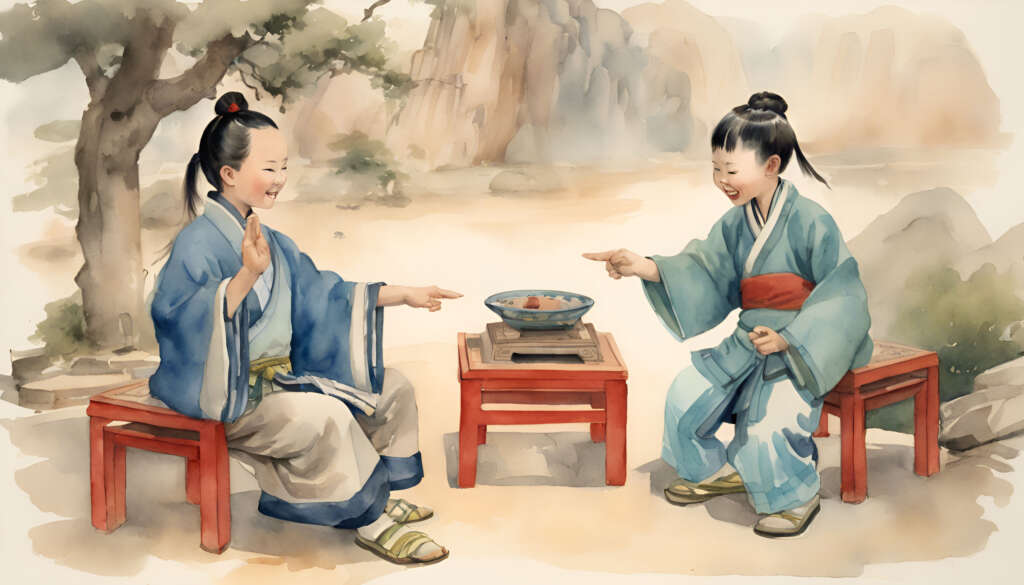THE GAME OF rock, paper, scissors started in China, historians believe. The Ming Dynasty writer Xie Zhaozhe wrote in the 1600s that it date back to the Han Dynasty (206 BCE – 220 CE).
But the three elements weren’t rock, paper and scissors. The game was called shoushiling (手勢令), or hand gesture command.
The original elements were probably three animals: a centipede, a frog, and a snake. While a snake could eat a frog, and a frog could eat a centipede, the centipede was poisonous—so could kill the snake.
The game is also mentioned in Note of Liuyanzhai by Li Rihua, a bureaucrat and artist who published various worked in the early 1600s.

The game was eventually picked up by the Japanese, who called it sansukumi-ken, meaning three-who-fear-each-other fist.
In one version, the three elements are a fox, the village headsman, and a hunter. The supernatural fox kitsume (狐) kills the village headsman, the village headsman (庄屋) kills the hunter, and the hunter (猟師) kills the fox.
The game didn’t arrive in the west until the 1900s. A Washington Herald article from 1921 describes it as a “Chinese gambling” technique.
It soon acquired the rock paper scissors format and quickly caught on. A 1927 British thriller was called Scissors Cut Paper and was followed two years later by Stone Blunts Scissors.
But there are still alternative editions out there. In Indonesia, it became earwig, man, elephant. The man stomps on the earwig, the elephant stomps on the man, and the earwig goes into the elephants ear hole and eats its brain.
The game has been so successful because it can be seen as idle fun – but it is also used as a decisionmaker.
Today, the game has gone full circle–and is now played in China in the modern “scissors” form. But Asians often say “cloth” instead of paper. Wrapping something sharp in a piece of cloth seems more secure to players than wrapping it in a sheet of paper.
Image at the top by Fridayeveryday.

